We explain what crocodiles are, what their anatomy is like, and the habitat in which they live. Also, what are its characteristics and reproduction.
What is the crocodile?
The crocodile is a reptile that includes 14 current subspecies. It is a semi-aquatic animal of tropical climates, with distribution in various continents: Africa, Asia, America, and Oceania.
The current species present very few differences with respect to fossil specimens which are estimated to be 55 million years old.
The specimens of the largest species can measure up to 6 meters in length and weigh up to 800 kg.
Like other reptiles, they are ectothermic, meaning that their body temperature is not controlled by internal mechanisms of the body but by their behavior. For this reason, they remain in the sun to warm themselves, and to cool down they take refuge in underground burrows or in the water.
Crocodile morphology
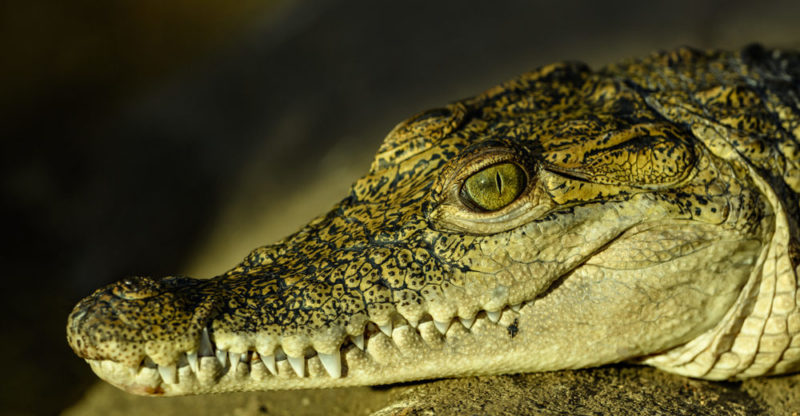
The body of crocodiles is flat and elongated. The tail accounts for almost 50% of the total length. The ventral area is lighter in color than the upper part, and it is also softer. The upper part in most species is protected by ridges and bony ridges.
Crocodiles have elongated mouths, their teeth sharp and powerful in the jaws, allowing them to break shells of mollusks and bones of other animals.
Crocodile movement
Because all four limbs are short, crocodiles move very slowly on land compared to their agile movements in water, especially in shallow parts. On land, its maximum speed is between 2 and 4 km / h.
In the water, the webbed feet facilitate their speed but their movement is governed mainly by the tail.
Crocodile nervous system
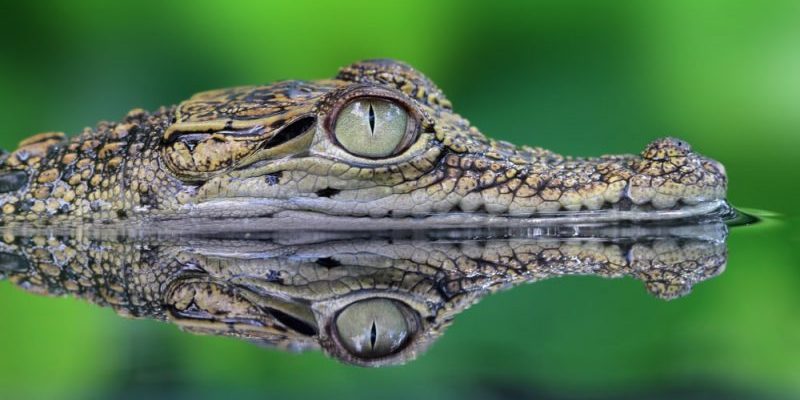
The crocodile's brain is small relative to its body: it is about the size of a human thumb. However, it is characterized by having a cerebral cortex, composed as in the case of humans by gray matter. Although it is scarce, the cortex allows it to have memory and a particular type of intelligence.
The great development of his cerebellum allows him to control complex movements, mainly in the water.
Their most developed senses are sight and smell.
Crocodile habitat
Crocodiles inhabit warm areas of Asia, Africa, North America, Central America, and Australia. Since they are semi-aquatic animals, they live on the banks of rivers and in some cases on the marine coast.
Crocodile feeding
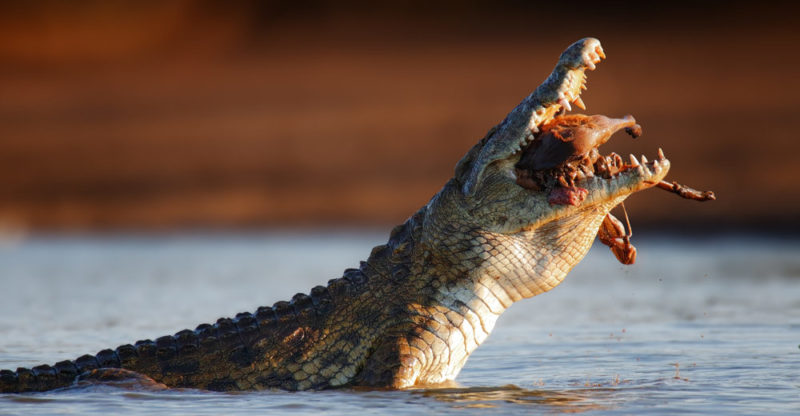
They are super-predatory carnivorous animals, that is, they generally do not have predators to attack them. They are at the end of the food chain.
They are opportunistic, they do not have a preference for specific prey but they can attack any animal they find. Their strong jaws allow them to break the shells of crustaceans and turtles but also attack large mammals such as horses.
Crocodile reproduction
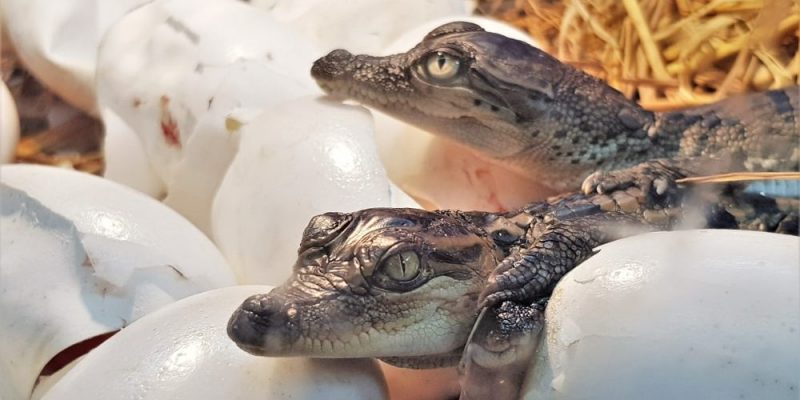
Crocodiles are internally fertilized oviparous. Males reach sexual maturity at 16 years and females at 10.
In almost all crocodile subspecies the reproductive cycle begins in the spring. The males try to attract the females with bellows and compete with each other for the opportunity to reproduce.
The female lays an average of 40 already fertilized eggs, varying in number depending on the species. The eggs remain buried between 80 and 100 before hatching.
The sex of crocodiles is not determined by their chromosomes but by the temperature during incubation.
Crocodile skin
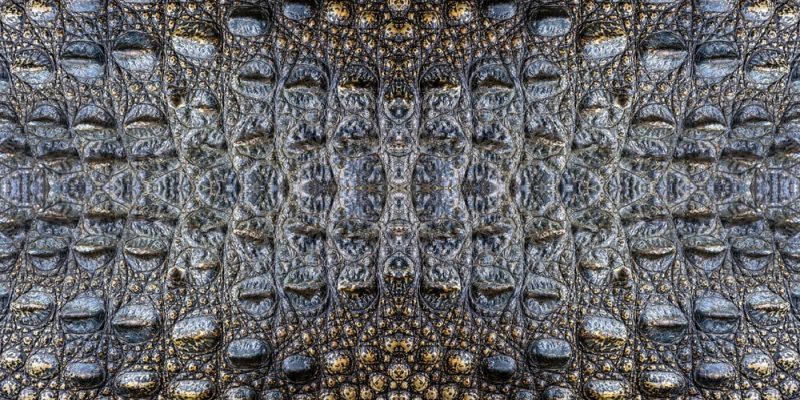
The skin of the crocodile is covered in scales made up of keratin, the same hard component that makes up the nail of humans.
Also, between the scales and underneath them are small bony plates called osteoderms. These plates are overlapped, offering a flexible but tough defense on the animal's back.
Crocodile hunting
Although in some places it is illegal, hunting of alligators is common in Florida, the Gulf of Mexico, and in Luisana. Since they can be a threat to man, many locals hunt them to reduce their numbers, while others hunt them as a sport or feat.
Crocodiles are also hunted for their meat or use their skins to make shoes, belts, and bags.
Differences with alligators
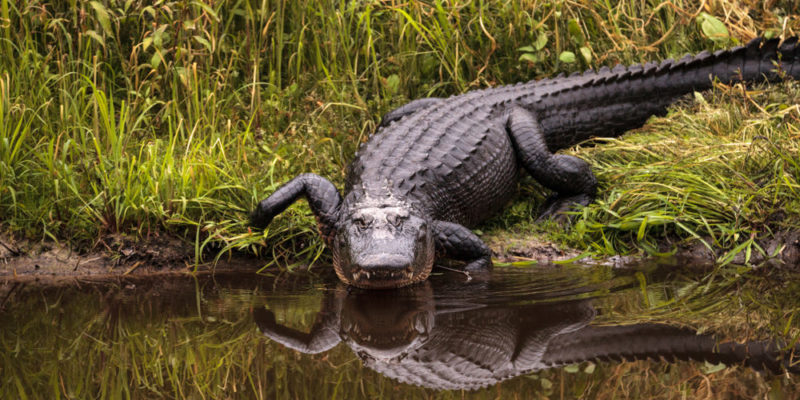
Although they are often confused with each other because of their appearance, crocodiles and alligators are reptiles that belong to different families and can be differentiated by a number of traits:
- Snout. The alligator has a wider and U-shaped snout, while the crocodiles are thin and V-shaped. Also, alligators have a lower jaw that is thinner than the upper one, unlike crocodiles that have both jaws of the crocodile. Same size.
- Scales Alligators lack the spots and dimples that can be seen in crocodile scales.
- Habitat. Although both alligators and crocodiles can live in freshwater, only crocodiles are found in saltwater.
Crocodiles in danger of extinction
The above content published at Collaborative Research Group is for informational and educational purposes only and has been developed by referring to reliable sources and recommendations from technology experts. We do not have any contact with official entities nor do we intend to replace the information that they emit.
Luke is passionate about fostering student involvement and connection. He studied psychology for his major and likes learning about the past. Luke aims to specialize in artificial intelligence and cybersecurity. .
Leave a reply
Your email address will not be published. Required fields are marked *Recent post

Sport: What Is It, Types, Risks, Features, Characteristics and Examples

Dogs: Emergence, Features, Characteristics, Feeding and Breeds

Story: Definition, Elements, Structure, Features and Characteristics

